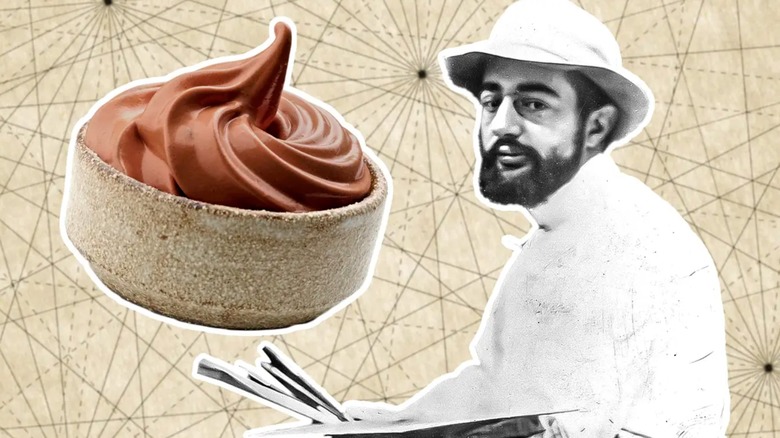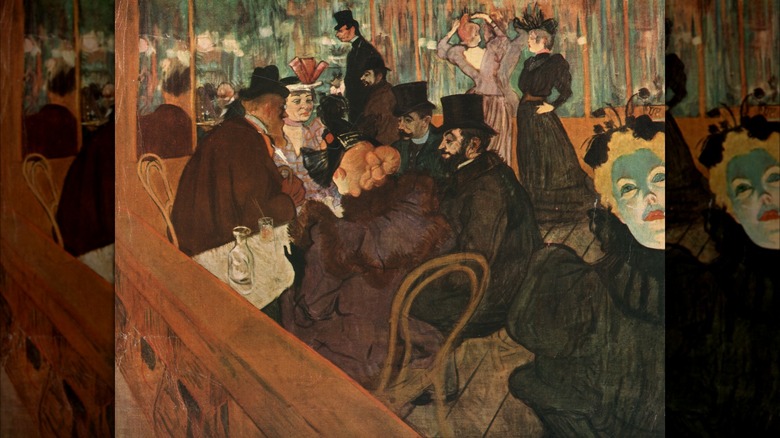The Historical Connection Between Chocolate Mousse And Toulouse-Lautrec
In addition to being a prolific painter and achieving success within his lifetime, Henri de Toulouse-Lautrec was, as the Art Institute of Chicago puts it, gifted at "representing the celebrity brand." One of his most famous works, "At the Moulin Rouge" (1892), is theatrical and vibrant, depicting a bustling metropolitan nightlife scene that's full of electricity and the hum of the after-hours-underworld.
Many of the paintings in the artists' oeuvre share similar subjects of cabarets, brothels, dance halls, salons, and cafes — fashionable people doing fashionable things in fashionable places. Indeed, to say that Toulouse-Lautrec had a "palette" for the decadent would be accurate in a more literal sense than many folks may think. Ina Garten may be a chocolate mousse lover, but perhaps more surprisingly, so was French post-Impressionist painter Henri de Toulouse-Lautrec.
While other artists like Picasso and Van Gogh were chasing the green fairy under the absinthe drip, Toulouse-Lautrec was using his spoon to carve into bowls of rich chocolate mousse. (Although, per the lore, 19th-century Parisians reportedly also knew him to carry a holly cane filled with absinthe as a regular fixture. Call it a well-rounded palette.) Chocolate mousse might seem like an emblem of fine dining, but it wasn't invented by a chef at all. It was created by Toulouse-Lautrec during the late 1800s — the same period during which he painted many of his most famous works.
Fueling la belle époque
Before Julia Child included a recipe for it in her 1961 cookbook "Mastering the Art of French Cooking" and before it appeared in a 1950s Betty Crocker cookbook, chocolate mousse had already enjoyed a long, rich (pun intended) history as a French staple. It caught on quickly after its late-1800s invention. Still, despite Henri de Toulouse-Lautrec's legendary aesthetic influence, he was less adept at naming foods. Chocolate mousse used to be called "mayonnaise de chocolat," or "chocolate mayonnaise." (Thank goodness somebody stepped in.)
Creating whipped mousse's delicate texture and flavor requires an especially tricky technique that's impressive when executed (let alone created) by a home cook. A base of cooked egg yolks and sugar must be held at room temperature, and not deflate when folded with egg whites and very cold whipped cream, which is whipped to stiff peaks right before incorporation. Then, to make it chocolate mousse, chocolate chunks are melted separately, brought to room temperature, and poured into the egg yolk base. Classic preparations also include brandy, which is added to the egg base.
Perhaps as a natural extension of his full-time job as a bohemian artist with a famous penchant for hedonism, Toulouse-Lautrec also loved cooking as an avid hobby. But chocolate mousse was one of the more accessible recipes in his repertoire, which was also known to include grilled grasshoppers, stewed porpoise filets, lobster à l'Américaine, quails in ashes, thrushes in juniper, squirrels, herons, stewed marmots, and baked kangaroo, among others.

